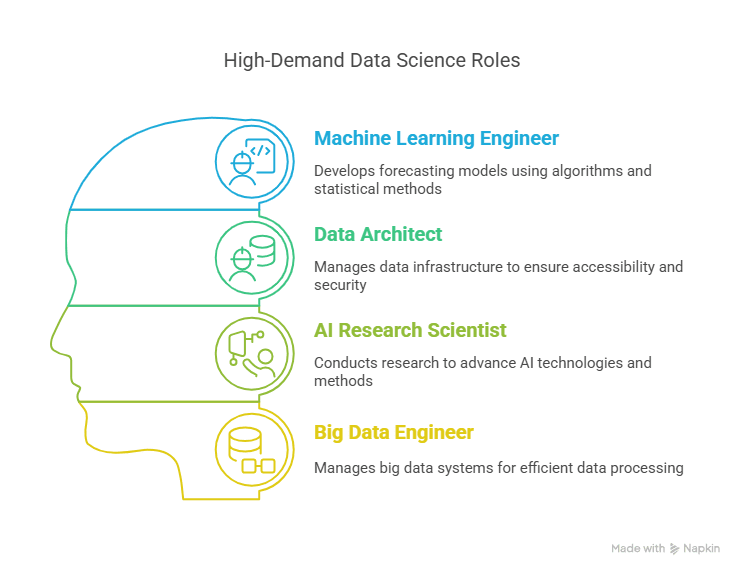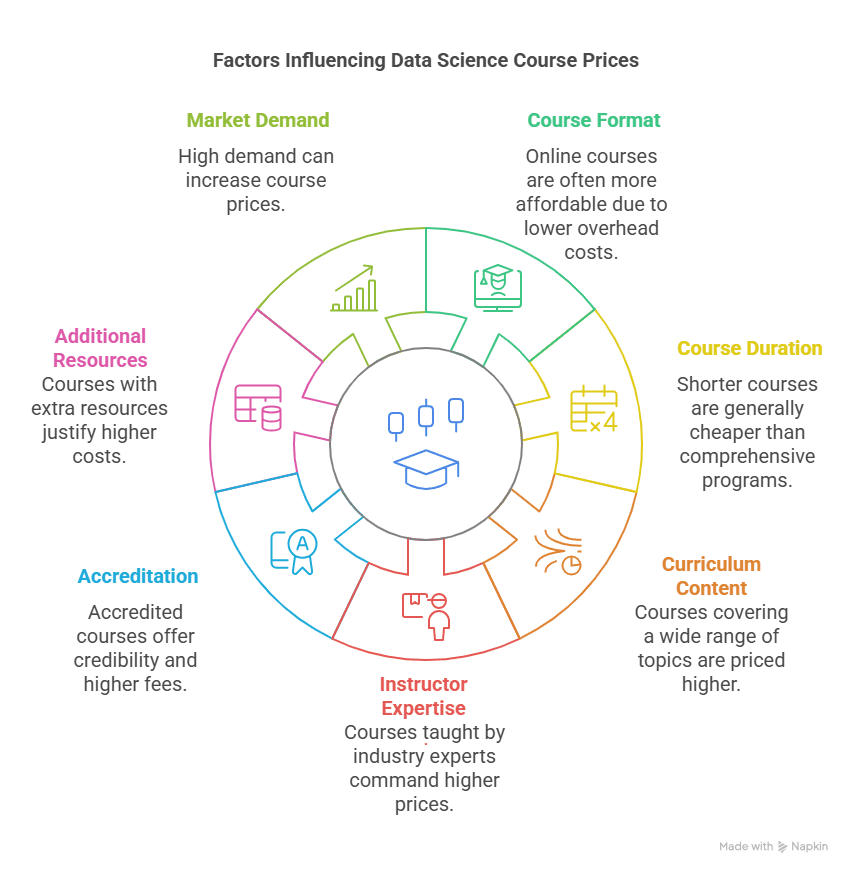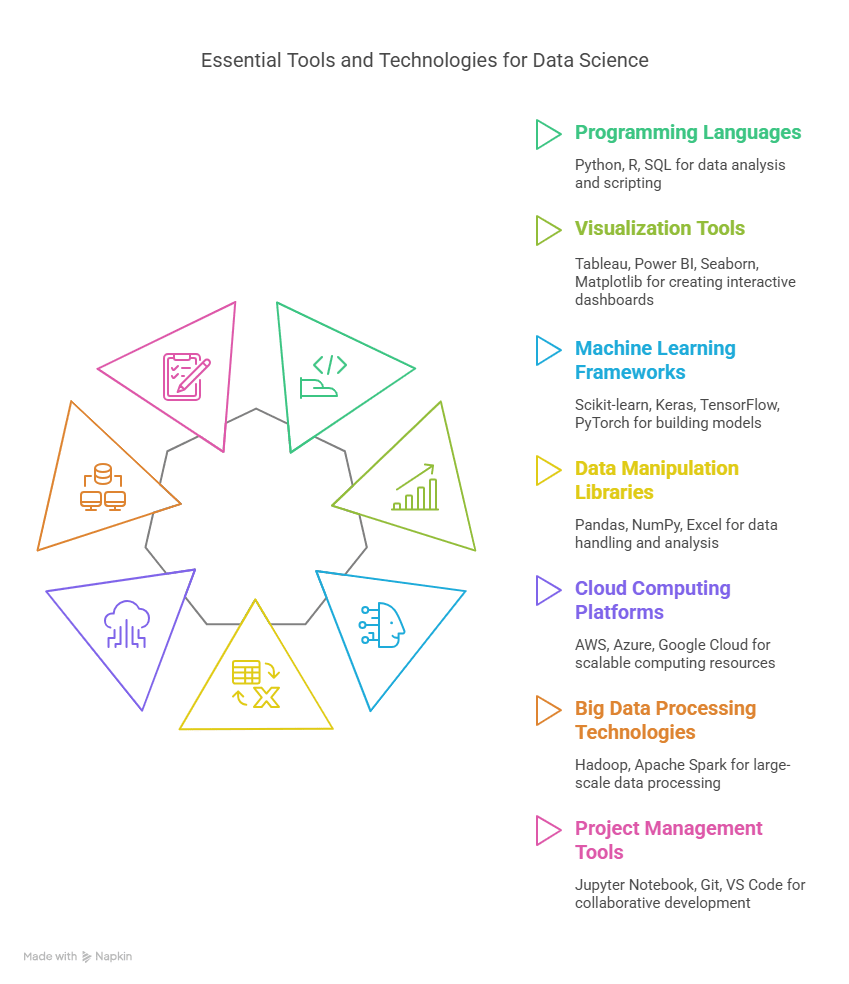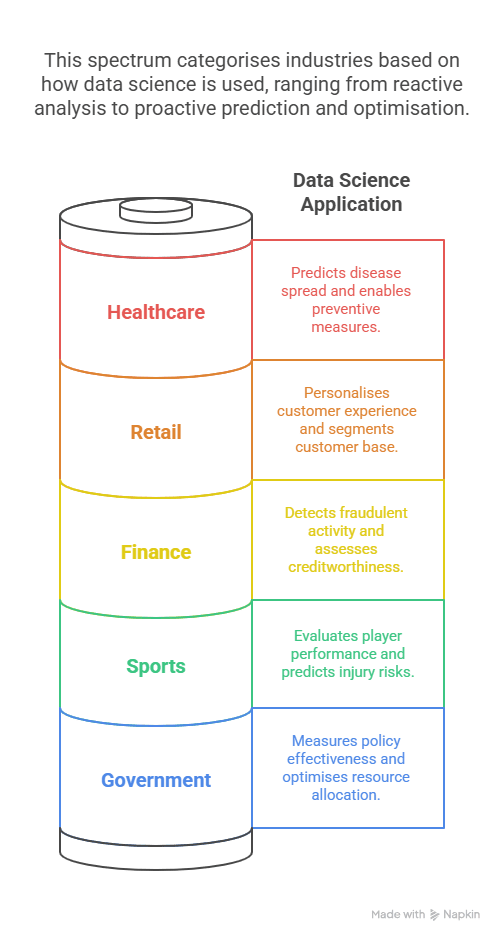Table of Contents
- Introduction: Is Data Science for You?
- Qualifications Needed for Data Science
- How to Become a Data Scientist
- Data Science Career Transition: Tips for Professionals
- Best Degrees for Data Science
- Skills Required for Data Scientists
- Certifications for Data Science Careers
- Breaking into Data Science Without Experience
- Key Takeaways
- FAQs
- Conclusion
What Is Data Science: Is It for You?
Have you ever felt intrigued by numbers, patterns, or predictions? Do you often find yourself wondering how Netflix knows what to recommend next or how Google reads your thoughts? If you do-and if you are contemplating a career change-you could fit the bill for data science to a T. In this guide we explain the qualifications you will need as a data scientist to break into this fast-offering field, especially if you are doing so from a mid-career switch.
Qualifications Required for Data Science
Most people mistakenly believe that one needs a Ph.D. to qualify as a data scientist. Certainly, that can help; however, it is not a requirement. What is most important is a combination of education, analytical thinking, and tool-based skills. This section will explain to you the baseline qualifications needed for data science, especially for non-technical people.
Here’s a quick comparison of qualifications typically expected for entry-level vs. mid-level roles:
| Role Level | Qualification Requirements | Preferred Background |
| Entry-Level | Bachelor’s in STEM, basic programming skills | Math, CS, Economics |
| Mid-Level | Master’s or certifications, industry experience | Engineering, Business, Stats |
| Senior-Level | Advanced degrees or 5+ yrs experience | Specialized domain expertise |
Key Points:
- A degree is important, but hands-on skills often matter more.
- Employers value problem-solving abilities and project experience.
How to Become a Data Scientist
So, how do you start the journey? There isn’t just one road to data science. This section outlines how to tailor your path based on where you’re starting.
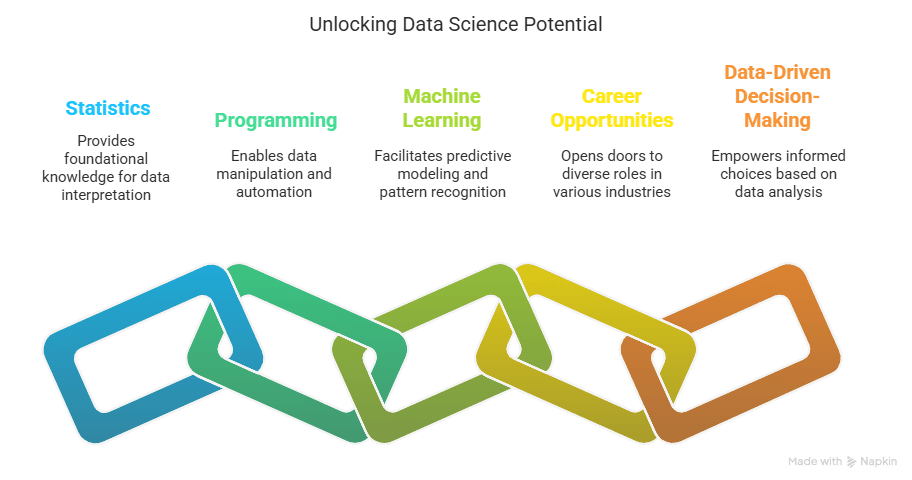
Here’s a basic roadmap for how to become a data scientist:
- Learn Python or R – These are the industry favourites.
- Master SQL – Knowing how to manipulate databases is crucial.
- Understand Statistics – Core concepts like probability, regression, and distributions are musts.
- Build Portfolio Projects – Use real datasets to solve problems.
- Network and Join Communities – LinkedIn groups, Kaggle competitions, and meetups matter.
Whether you’re coming from finance, marketing, or engineering.. data science skills can give you an edge.
Harvard Business Review called data science- the “sexiest job of the 21st century”. Why not make it yours?
Data Science Career Transition: Tips for Professionals
Changing careers isn’t easy—but it’s entirely possible. With the right strategy, even professionals with no tech background can break into data science. This section is tailored for those making a data science career transition.
Mid-career professionals often hesitate to pivot due to fear of starting over. But data science is surprisingly welcoming to diverse backgrounds. Your business acumen, domain expertise, and communication skills are valuable in this field. This guide will show you how to transition effectively.
Top Tips for Career Changers:
- Bridge the gap with certification programs.
- Highlight analytical work in your past roles.
- Start freelancing or take internships.
- Use LinkedIn to showcase learning progress.
- Get a mentor or career coach.
Best Degrees for Data Science
While many data scientists have traditional STEM backgrounds, there’s increasing diversity in academic paths. Here’s what you should know about the best degrees for data science.
Not sure if your degree qualifies? Don’t worry. Employers are open to various academic backgrounds as long as you can demonstrate competency in data-related skills. However, some degrees are more aligned with the field’s demands.
| Degree | Relevance to Data Science | Special Notes |
| B.Sc in Computer Science | High | Offers solid programming foundation |
| B.Tech in IT | High | Includes software and systems focus |
| B.Sc in Math/Statistics | Medium to High | Strong in analytical foundations |
| MBA (with analytics) | Medium | Good for business-data intersection |
Skills Required for Data Scientists
Data scientist qualifications go beyond degrees and certificates. Skills—both technical and soft—are what really matter in real-world jobs. Let’s explore the skills required for data scientists today.
Employers look for more than just theory. You need hands-on, job-ready skills. A good mix of coding, data wrangling, statistical modelling, and communication is crucial. This section breaks down the skill sets most valued in India’s data science job market.
Must-Have Skills:
- Programming: Python, R, SQL
- Data Handling: Pandas, NumPy, Excel
- Visualization: Tableau, Power BI, Matplotlib
- Machine Learning: Scikit-learn, TensorFlow, basic algorithms
- Communication: Ability to present findings to non-tech stakeholders
Certifications for Data Science Careers
If you’re hoping to get into the field fast, certifications can help address the experience disadvantage. Here’s list of certifications for a career in data science that employers recognise.
Not everyone is able to do a full-time education. This is where certifications can help out because they are quicker, and more narrowly focused on the current industry needs. Picking the right one can improve your chances of getting the job you want.
Top Certifications:
- Google Data Analytics Certificate
- IBM Data Science Professional Certificate
- Microsoft Certified: Azure Data Scientist Associate
- Imarticus Learning – PG Program in Data Science and Analytics
LinkedIn Learning also offers certain courses aligned with industry skills.
Breaking into Data Science Without Experience
This is the most common concern for career changers: “Can I really do this without experience?” The answer is yes—with planning and persistence.
If you’re breaking into data science without experience, focus on what you can control—your learning path, your portfolio, and your online presence. Companies often hire based on demonstrable skills, not just resumes. Here’s how to start.
Actionable Tips:
- Build 3–4 strong projects and publish on GitHub
- Start a blog sharing your learning journey
- Contribute to open-source or volunteer data projects
- Take part in Kaggle competitions
- Attend webinars and industry conferences
Key Takeaways
- Data scientist qualifications include a mix of degrees, certifications, and skills.
- You don’t need a traditional tech background to start.
- Certifications and self-learning platforms can fast-track your career switch.
- Building a portfolio is essential for showcasing your abilities.
- Employers value practical skills and communication as much as formal education.
FAQs
1. Do I need a Ph.D. to become a data scientist?
No.. most entry-level roles only require a bachelor’s or master’s degree along with relevant skills in programming & analytics.
2. Can I become a data scientist at 35 or older?
Absolutely! Many professionals successfully transition into data science in their 30s or 40s with the right preparation and learning path.
3. Which certification is best for a career switch?
Imarticus Learning’s PG program is industry-focused and great for learners. Google’s Data Analytics Certificate or IBM’s Data Science Certificate are also some starting points.
4. Is programming a requirement?
Yes, a bit of programming experience is required (in particular, knowledge of Python or R), but you don’t have to be a programmer.
5. How long to goal-to-job-ready?
If you focus, you can be ready for the job market in about 6–12 months.
6. Generally – what do data scientists earn in India?
Entry-level jobs range from ₹6–10 LPA on average, while experienced data scientists can earn over ₹25 LPA.
7. Are there remote opportunities in data science?
Yes, many data science roles offer remote or hybrid working models.
8. What’s more important—degree or portfolio?
A strong portfolio often outweighs a traditional degree, especially for career changers.
9. Can I switch from a non-tech role like HR or marketing?
Yes! Your domain knowledge combined with new data skills can give you a unique edge.
10. Should I pursue a Master’s in Data Science?
If time and budget allow, yes. But short-term certifications are also highly effective.
Conclusion
Stepping into the data science field may seem challenging but it’s more probable than ever to be able to break in. With the right data scientist qualifications, specific learning plan, and compelling portfolio, non-technical professionals can also get into this high demand field. The future is data-driven so it is a good time to explore your options and get involved.

